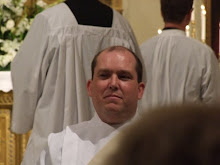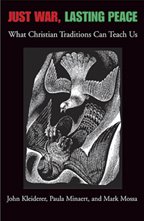Wretched Excess: The Foolishness of Holy Love
Saint Ignatius' Autobiography, part 30
This done, he returned to where he had been before, and was seized with a great desire of again visiting Mount Olivet before leaving, since it was not our Lord’s will that he remain there in those holy places. On Mount Olivet there was a stone from which our Lord ascended into heaven and the print of his footstep is still to be seen. It was this he wished to see again. Without a word to anyone, therefore, or without taking a guide (for those who go without a Turk as a guide run great risk), he slipped away from the others and went alone to Mount Olivet. The guards did not want to let him in, but he gave them a desk-knife which he carried with him. After having prayed with deep devotion, he wanted to go to Bethpage, and while he was there, he recalled again that he had not noticed on Mount Olivet in what direction the right foot was turned, or in what direction the left. Returning, he gave his scissors, I think, to the guards for permission to enter.
When they learned at the monastery that he had left without a guide, the friars made every effort to find him. As he was coming down from Mount Olivet, he fell in with a Syrian Christian who worked at the monastery. The man had a large staff and showing signs of great annoyance made as though he were going to beat him with it, and when he came up with him, grabbed him roughly by the arm, and the pilgrim easily allowed himself to be led away. The good man never let go of him. Coming thus in the grasp of the Syrian Christian, he had great consolation from our Lord Who he thought he saw above him all along the way. This consolation lasted in great abundance till they reached the monastery.
I remember reading St. Therese’s Story of a Soul and thinking her rather silly when she described escaping the guides and sneaking into the Roman coliseum herself, so that she could kiss the ground where the martyrs had been killed. If I remember correctly, I think she even pried a stone from the ground and kept as something of a holy relic. The excesses, I thought, of an overly pious and silly young girl! Yet, when I read this part of the Autobiography of Saint Ignatius I can’t help but be reminded of that silly young girl, except that Ignatius is a grown man! Is Ignatius any less silly for bribing the guards twice? Once, so he might just see once more the place from which Jesus ascended, and the footprint there. And then, again, because he failed to notice in which direction the foot was pointing! He might even have it over on Therese here for silliness! Not to mention that he does so when he is supposed to be leaving, and without adequately ensuring his safety. It’s wretched excess, but there is something wonderful about it.
The problem is that we’ve come to a point in our history in which we are used to dismissing such passion as irrational and even disturbed—when it comes to things religious. Ironically, we are much more forgiving and accepting of this type of behavior when people show this kind of devotion to celebrities—just think of the last rock concert you went to. When I taught a class on religious experience class last year, I showed the films Field of Dreams and Almost Famous, two of my favorites. Few recent films capture the nature of passionate religious experience like they do, and neither of them is about religion. I think that’s why, like many of my generation, I love those movies so much; they portray a passion of the kind we would like to be able to invest in something, something transcendent. How is Ray Kinsella’s irrational baseball field in the middle of his cornfield in Iowa any different than Ignatius’ and Therese’s irrational races to their holy sites? Indeed, aren’t those dead baseball players come to play on that silly baseball field a bit like the communion of saints?
There are signs that young people today want to invest their passion into something transcendent like that and, as risky as this might seem for some of us, we should allow them to invest that passion into their faith, no matter how excessive it might seem. Kenda Creasy Dean writes, in Practicing Passion:
“Acts of passion enact love in light of the cross, not in light of human fulfillment—a love that is never “toned down” for the sake of propriety. No wonder holy love looks foolish; it is foolish. Through the historic practices of the Christian church, young people are invited into and odd and holy life that imitates and participates in a life and death commitment: the life, death, and resurrection—or Passion—of Jesus Christ.”
But this isn’t just a message for young people. Therese is a young girl, but Ignatius is approaching what for him would be mid-life. Yet what we see in both Ignatius and Therese, to use Dean’s words, is foolish, holy love. Something that we could all use a lot more of in our lives.
This done, he returned to where he had been before, and was seized with a great desire of again visiting Mount Olivet before leaving, since it was not our Lord’s will that he remain there in those holy places. On Mount Olivet there was a stone from which our Lord ascended into heaven and the print of his footstep is still to be seen. It was this he wished to see again. Without a word to anyone, therefore, or without taking a guide (for those who go without a Turk as a guide run great risk), he slipped away from the others and went alone to Mount Olivet. The guards did not want to let him in, but he gave them a desk-knife which he carried with him. After having prayed with deep devotion, he wanted to go to Bethpage, and while he was there, he recalled again that he had not noticed on Mount Olivet in what direction the right foot was turned, or in what direction the left. Returning, he gave his scissors, I think, to the guards for permission to enter.
When they learned at the monastery that he had left without a guide, the friars made every effort to find him. As he was coming down from Mount Olivet, he fell in with a Syrian Christian who worked at the monastery. The man had a large staff and showing signs of great annoyance made as though he were going to beat him with it, and when he came up with him, grabbed him roughly by the arm, and the pilgrim easily allowed himself to be led away. The good man never let go of him. Coming thus in the grasp of the Syrian Christian, he had great consolation from our Lord Who he thought he saw above him all along the way. This consolation lasted in great abundance till they reached the monastery.
I remember reading St. Therese’s Story of a Soul and thinking her rather silly when she described escaping the guides and sneaking into the Roman coliseum herself, so that she could kiss the ground where the martyrs had been killed. If I remember correctly, I think she even pried a stone from the ground and kept as something of a holy relic. The excesses, I thought, of an overly pious and silly young girl! Yet, when I read this part of the Autobiography of Saint Ignatius I can’t help but be reminded of that silly young girl, except that Ignatius is a grown man! Is Ignatius any less silly for bribing the guards twice? Once, so he might just see once more the place from which Jesus ascended, and the footprint there. And then, again, because he failed to notice in which direction the foot was pointing! He might even have it over on Therese here for silliness! Not to mention that he does so when he is supposed to be leaving, and without adequately ensuring his safety. It’s wretched excess, but there is something wonderful about it.
The problem is that we’ve come to a point in our history in which we are used to dismissing such passion as irrational and even disturbed—when it comes to things religious. Ironically, we are much more forgiving and accepting of this type of behavior when people show this kind of devotion to celebrities—just think of the last rock concert you went to. When I taught a class on religious experience class last year, I showed the films Field of Dreams and Almost Famous, two of my favorites. Few recent films capture the nature of passionate religious experience like they do, and neither of them is about religion. I think that’s why, like many of my generation, I love those movies so much; they portray a passion of the kind we would like to be able to invest in something, something transcendent. How is Ray Kinsella’s irrational baseball field in the middle of his cornfield in Iowa any different than Ignatius’ and Therese’s irrational races to their holy sites? Indeed, aren’t those dead baseball players come to play on that silly baseball field a bit like the communion of saints?
There are signs that young people today want to invest their passion into something transcendent like that and, as risky as this might seem for some of us, we should allow them to invest that passion into their faith, no matter how excessive it might seem. Kenda Creasy Dean writes, in Practicing Passion:
“Acts of passion enact love in light of the cross, not in light of human fulfillment—a love that is never “toned down” for the sake of propriety. No wonder holy love looks foolish; it is foolish. Through the historic practices of the Christian church, young people are invited into and odd and holy life that imitates and participates in a life and death commitment: the life, death, and resurrection—or Passion—of Jesus Christ.”
But this isn’t just a message for young people. Therese is a young girl, but Ignatius is approaching what for him would be mid-life. Yet what we see in both Ignatius and Therese, to use Dean’s words, is foolish, holy love. Something that we could all use a lot more of in our lives.






3 Comments:
foolish, holy love ... I like the sound of that :-)
I am giving a talk on mystics on Thursday to what will be a room full of women who have spent a year in dogmantic study of the faith. I have been struggling with how to get across this very point. To the rational mind the mystic seems a fool. To another mystic one sees someone who is searching for the heart of God in acts of foolish holy love.
Maggie
Maggie,
Feel free to steal anything you'd like!
Welcome home!
Mark
Post a Comment
<< Home